雅思写作讲座(新航道)lesson 5
- 格式:ppt
- 大小:2.00 MB
- 文档页数:48
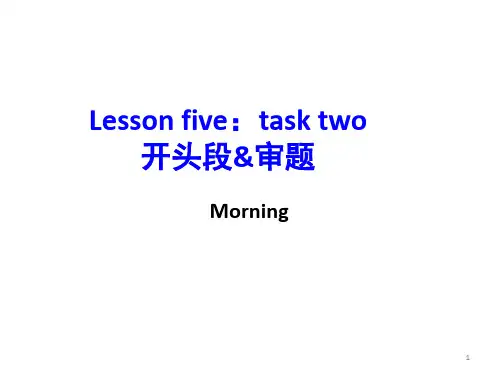
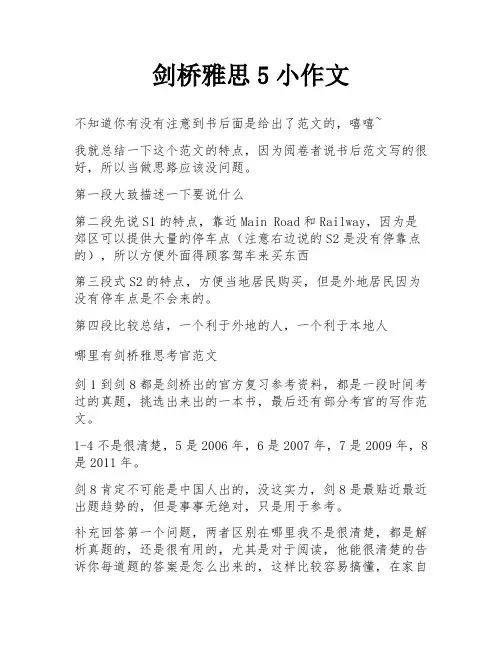
剑桥雅思5小作文不知道你有没有注意到书后面是给出了范文的,嘻嘻~我就总结一下这个范文的特点,因为阅卷者说书后范文写的很好,所以当做思路应该没问题。
第一段大致描述一下要说什么第二段先说S1的特点,靠近Main Road和Railway,因为是郊区可以提供大量的停车点(注意右边说的S2是没有停靠点的),所以方便外面得顾客驾车来买东西第三段式S2的特点,方便当地居民购买,但是外地居民因为没有停车点是不会来的。
第四段比较总结,一个利于外地的人,一个利于本地人哪里有剑桥雅思考官范文剑1到剑8都是剑桥出的官方复习参考资料,都是一段时间考过的真题,挑选出来出的一本书,最后还有部分考官的写作范文。
1-4不是很清楚,5是2006年,6是2007年,7是2009年,8是2011年。
剑8肯定不可能是中国人出的,没这实力,剑8是最贴近最近出题趋势的,但是事事无绝对,只是用于参考。
补充回答第一个问题,两者区别在哪里我不是很清楚,都是解析真题的,还是很有用的,尤其是对于阅读,他能很清楚的告诉你每道题的答案是怎么出来的,这样比较容易搞懂,在家自己就能多多训练,不然对好答案,也不知道错在哪里,应该怎么做。
求雅思写作范文书推荐!您好!雅思写作参考书我们并不缺,市面上各种写作指导不下30种。
写作理论体系也不缺,什么单边式,双边式,让步式,不一而足。
对于一个7分的文章应该是什么样,大家也是各说各的。
虽然有我们有统一的评分标准的指导,但是什么人的解读最有效呢?聪明的同学已经猜到了,当然是雅思考官。
考官的标准才是我们唯一需要遵循的标准。
而考官的标准去哪里找呢?毫无疑问,答案在剑桥雅思真题的范文。
我们现在用的最多的雅思写作参考书就是剑桥雅思的真题。
大作文写作有一个明显的特点,那就是虽然话题多样,提问形式多变,但是常考的话题也就那么几个,从剑桥4-到剑桥8,包括A类和G类文章在内,共有30个题目,基本涉及到了过半数的雅思写作话题了。
对于小作文,常见的四种图形--线图,饼图,柱图,饼图--以及两种不常见的图形--地图和流程图--每一种类型在剑桥真题当中都有所涉及。
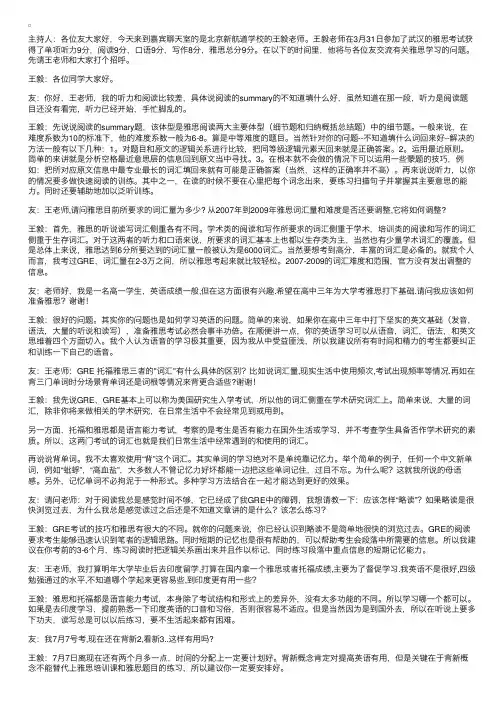
主持⼈:各位友⼤家好,今天来到嘉宾聊天室的是北京新航道学校的王毅⽼师。
王毅⽼师在3⽉31⽇参加了武汉的雅思考试获得了单项听⼒9分,阅读9分,⼝语9分,写作8分,雅思总分9分。
在以下的时间⾥,他将与各位友交流有关雅思学习的问题。
先请王⽼师和⼤家打个招呼。
王毅:各位同学⼤家好。
友:你好,王⽼师,我的听⼒和阅读⽐较差,具体说阅读的summary的不知道填什么好,虽然知道在那⼀段,听⼒是阅读题⽬还没有看完,听⼒已经开始,⼿忙脚乱的。
王毅:先说说阅读的summary题,该体型是雅思阅读两⼤主要体型(细节题和归纳概括总结题)中的细节题。
⼀般来说,在难度系数为10的标准下,他的难度系数⼀般为6-8。
算是中等难度的题⽬。
当然针对你的问题--不知道填什么词回来好--解决的⽅法⼀般有以下⼏种:1。
对题⽬和原⽂的逻辑关系进⾏⽐较,把同等级逻辑元素天回来就是正确答案。
2。
运⽤最近原则。
简单的来讲就是分析空格最近意思层的信息回到原⽂当中寻找。
3。
在根本就不会做的情况下可以运⽤⼀些蒙题的技巧,例如:把所对应原⽂信息中最专业最长的词汇填回来就有可能是正确答案(当然,这样的正确率并不⾼)。
再来说说听⼒,以你的情况要多做快速阅读的训练。
其中之⼀,在读的时候不要在⼼⾥把每个词念出来,要练习扫描句⼦并掌握其主要意思的能⼒。
同时还要辅助地加以泛听训练。
友:王⽼师,请问雅思⽬前所要求的词汇量为多少? 从2007年到2009年雅思词汇量和难度是否还要调整,它将如何调整?王毅:⾸先,雅思的听说读写词汇侧重各有不同。
学术类的阅读和写作所要求的词汇侧重于学术,培训类的阅读和写作的词汇侧重于⽣存词汇。
对于这两者的听⼒和⼝语来说,所要求的词汇基本上也都以⽣存类为主,当然也有少量学术词汇的覆盖。
但是总体上来说,雅思达到6分所要达到的词汇量⼀般被认为是6000词汇。
当然要想考到⾼分,丰富的词汇是必备的。
就我个⼈⽽⾔,我考过GRE,词汇量在2-3万之间,所以雅思考起来就⽐较轻松。
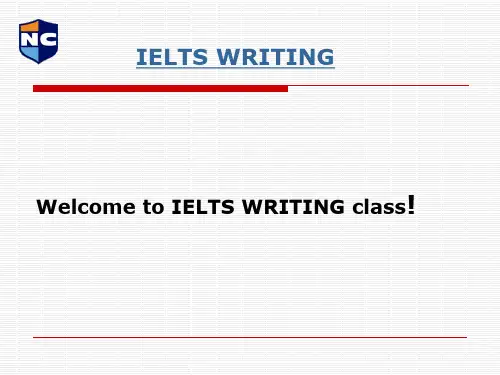
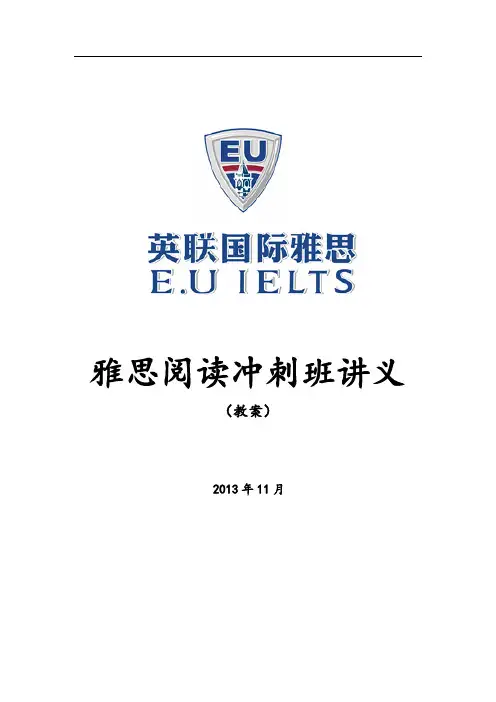
雅思阅读冲刺班讲义(教案)2013年11月雅思5.5基础阅读课程讲义UNIT 1 Education (3)UNIT 2 Food (5)UNIT 3 Health (7)UNIT 4 Media (10)Locating Information (15)UNIT 5 Practice 1 (18)UNIT 6 Advertising (20)UNIT 7 Learning to Speak (28)Summary Completion (30)UNIT 8 The Environment (31)Short Answers (33)UNIT 9 Sponsorship in Sport (34)UNIT 10 Practice 2 (38)Flowchart-Timeline Completion (40)UNIT 11 Transport (40)UNIT 12 Travel (48)UNIT 13 Technology (55)Labelling a Diagram (57)Unit14 Money (58)UNIT 15 Practice 3 (65)Multiple Choice (66)Labelling a Diagram (70)UNIT 17 Social Issues (71)IELTS Type Questions: Reading: for Details and for Main Ideas (73)Table Completion (73)UNIT 20 Practice 4 (79)Note Completion (80)UNIT 1 EducationEducation over the past 100 yearsAThe education of our young people is one of the most important aspects of any community, and ideas about what and how to teach reflect the accepted attitudes and unspoken beliefs of society. These ideas change as local customs and attitudes change, and these changes are reflected in the curriculum, teaching and assessment methods and the expectations of how both students and teachers should behave.词汇讲解:curriculum n. 教学大纲;reflect v. 反映;反射;assessment n. 评价;BTeaching in the late 1800s and early 1900s was very different from today. Rules for teachers at the time in the USA covered both the teacher's duties and their conduct out of class as well. Teachers at that time were expected to set a good example to their pupils and to behave in a very virtuous and proper manner. Women teachers should not marry, nor should they ‘keep company with men.' They had to wear long dresses and no bright colours and they were not permitted to dye their hair. They were not allowed to loiter downtown in an ice cream store, and women were not allowed to go out in the evenings unless to a school function, although men were allowed one evening a week to take their girlfriends out if they went to church regularly. No teachers were allowed to drink alcohol. They were allowed to read only good books such as the Bible, and they were given a pay increase of 25c a week after five years of work for the local school.词汇讲解:manner n. 行为守则;be expected to:被预期…表示将来时:be expected tobe predicted tobe perspective toCAs well as this long list of ‘dos' and ‘don'ts,' teachers had certain duties to perform each day. In country schools, teachers were required to keep the coal bucket full for the classroom fire, and to bring a bucket of water each day for the children to drink. They had to make the pens for their students to write with and to sweep the floor and keep the classroom tidy. However, despite this list of duties, little was stipulated about the content of the teaching, nor about assessment methods. DTeachers would have been expected to teach the three ‘r’s—reading, writing and arithmetic, and to teach the children about Christianity and read from the Bible every day. Education in those days was much simpler than it is today and covered basic literacy skills and religious education. They would almost certainly have used corporal punishment such as a stick or the strap on naughty or unruly children, and the children would have sat together in pairs in long rows in the classroom. They would have been expected to sit quietly and to do their work, copying long rows of letters or doing basic maths sums. Farming children in country areas would have had only a few years of schooling and would probably have left school at 12 or 14 years of age to join their parents in farm work.词汇讲解:arithmetic:算数;literacy:文学,阅读;religious:宗教的;discrimination:歧视;religious discrimination:宗教歧视。

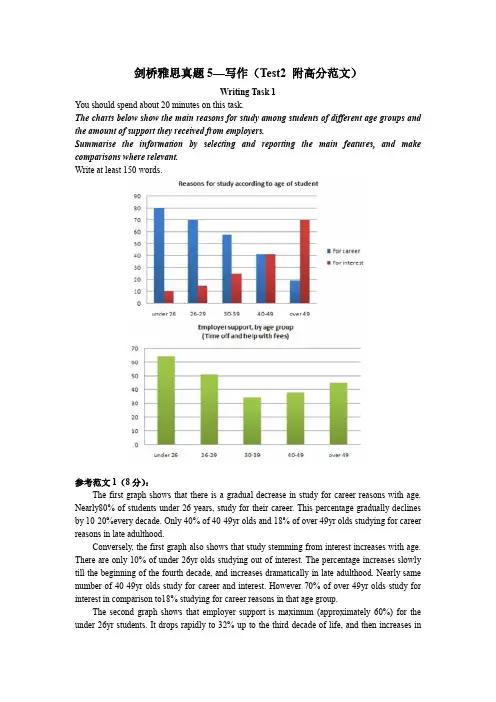
剑桥雅思真题5—写作(Test2 附高分范文)Writing Task 1You should spend about 20 minutes on this task.The charts below show the main reasons for study among students of different age groups and the amount of support they received from employers.Summarise the information by selecting and reporting the main features, and make comparisons where relevant.Write at least 150 words.参考范文1(8分):The first graph shows that there is a gradual decrease in study for career reasons with age. Nearly80% of students under 26 years, study for their career. This percentage gradually declines by 10-20%every decade. Only 40% of 40-49yr olds and 18% of over 49yr olds studying for career reasons in late adulthood.Conversely, the first graph also shows that study stemming from interest increases with age. There are only 10% of under 26yr olds studying out of interest. The percentage increases slowly till the beginning of the fourth decade, and increases dramatically in late adulthood. Nearly same number of 40-49yr olds study for career and interest. However 70% of over 49yr olds study for interest in comparison to18% studying for career reasons in that age group.The second graph shows that employer support is maximum (approximately 60%) for the under 26yr students. It drops rapidly to 32% up to the third decade of life, and then increases inlate adulthood up to about 44%. It is unclear whether employer support is only for career-focused study, but the highest level is for those students who mainly study for career purposes.考官评语:This answer summarises the key features of both charts and integrates them well. Clear trends are identified and supported with appropriately-selected figures. The answer could only be improved by adding an introduction to the general topic of the charts.The information is well organised, with a clearly-signalled progression. Linking words are used accurately and precisely, although there is occasional omission. Paragraphing is used well initially, but lapses in the later section.A very good range of vocabulary is used to convey the information concisely and accurately with only occasional inappropriacy. Words are used precisely and there are no errors in spelling or word form.A wide range of structures is used and most sentences in this answer are accurate. Errors are rare and do not affect communication in this answer.参考范文2(9分):The bar charts compare students of different ages in terms of why they are studying and whether they are supported by an employer.It is clear that the proportion of students who study for career purposes is far higher among the younger age groups, while the oldest students are more likely to study for interest. Employer support is more commonly given to younger students.Around 80% of students aged under 26 study to further their careers, whereas only 10% study purely out of interest. The gap between these two proportions narrows as students get older, and the figures for those in their forties are the same, at about 40%. Students aged over 49 overwhelmingly study for interest (70%) rather than for professional reasons (less than 20%).Just over 60% of students aged under 26 are supported by their employers. By contrast, the 30-39 age group is the most self-sufficient, with only 30% being given time off and help with fees. The figures rise slightly for students in their forties and for those aged 50 or more.参考范文3:The bar chart delineates the ratio of pupils who continue their education for the benefit of their career and from passion based on their age groups. The line graph reveals the ratio of support those students get from their companies as a form of financial support and time off. Overall, young students’ main focus for education is their job while it is mostly passion when they grow older.To illustrate, eight of ten people under 26 years old continue education for their career. Only 10% of them do it from passion. Interestingly, the higher the age, the more eager they become to study for personal interest, not for professional reasons. Seven out of ten people who are at least 50 years old study for interest. Finally, these two factors equally motivate people from 40-49 years old to further their learning.The second diagram shows that young employees who are less than 30 years old get more backing from their employers while the least support is expected for workers between 30 to 39 years old. However, it is interesting to notice that employers are more sympathetic to workers over 40 years old than they are to employees in their thirties.参考范文4:The diagrams outline why students from different age groups study and the support they getfrom their employers. Overall, having a good career is the main reason for young to study while it is personal interest for grown-ups. Moreover, young employees get more support from their employers regarding their education.According to the first bar graph, people who are under 40 years old mostly study for the career while people over 49 years mainly study for their interest. Interestingly for the age group 40 to 49, the number of people who study for career and the number of people who study for interest is the same. 80% students under 26 years continue their education to build a career. 7 out of ten students over 49 years old do so for their interest, rather than the career.Graph 2 shows that more than 60% students under 26 years old get support from their employers for their education and this supports includes the time off and monetary supports they get. This percentage reduces with the increase of age and at 30-39 age group, 32% get the support from the employers. After that, the employers’ support for their employees’ education increases and reaches to 45% for the over 49 year’s age group.Writing Task 2You should spend about 40 minutes on this task.Write about the following topic:In some countries young people are encouraged to work or travel for a year between finishing high school and starting university studies.Discuss the advantages and disadvantages for young people who decide to do this.Give reasons for your answer and include any relevant examples from your own knowledge or experience.Write at least 250 words.参考范文1:It is quite common these days for young people in many countries to have a break from studying after graduating from high school. This trend is not restricted to rich students who have the money to travel, but is also evident among poorer students who choose to work and become economically independent for a period of time.The reasons for this trend may involve the recognition that a young adult who passes directly from school to university is rather restricted in terms of general knowledge and experience of the world. By contrast, those who have spent some time earning a living or traveling to other places, have a broader view of life and better personal resources to draw on. They tend to be more independent, which is a very important factor in academic study and research, as well as giving them an advantage in terms of coping with the challenges of student life.However, there are certainly dangers in taking time off at that important age. Young adults may end up never returning to their studies or finding it difficult to readapt to an academic environment. They may think that it is better to continue in a particular job, or to do something completely different from a university course. But overall, I think this is less likely today, when academic qualifications are essential for getting a reasonable career.My view is that young people should be encouraged to broaden their horizons. That is the best way for them to get a clear perspective of what they are hoping to do with their lives and why. Students with such a perspective are usually the most effective and motivated ones and taking a year off may be the best way to gain this.参考范文2:Nowadays, it is quite common that after graduating high school, students will go to travel or work for one year before they go to college. Many people think it is harm for young people but others stand on the opposite side. For this question, there are numerous disadvantages, and also a lot of advantages at the same time.People, who advocate that traveling and working is harmful for students, give their reasons as follows. Knowledge system is complete, if you work or travel for one year between your graduation of high school and start of university, it means that the whole knowledge system is separated into two parts, and when you back to school, it is difficult for you to get into the tense of study. And young people may also squander a lot of time.On the contrary, a growing number of people claim that spending time to work or travel is good for their college study. On the one hand, when high school students stretch their power energy in high school year, they deserve to have time to relax. It is an excellent way for them to be rife with energy and then start their university life. On the other hand, working is a facilitate way to learn about society. It is not only good for their study, but also helpful for them to find a satisfied job after graduation.This issue should be well taken into consideration. As to how to address this problem, I am convinced that it depends on actual situation.。

互联网带来的影响雅思大作文范文雅思写作:网络取代面对面交流是好还是坏4月21日雅思大作文真题 | 网络取代面对面交流是好还是坏?“People today can shop, work and municate with others via the Internet. They don't need to do these face to face. Is it a positive or negative development?”解析&审题连续几周新题后,本周雅思作文回到了旧题模式,重现了2013年7月18日的作文题目。
本周考题涉及网络的应用。
关于网络对我们生活、工作和学习方方面面的影响,是雅思写作考试中的重点,“有了互联网,我们就可以不(上班,上学,去博物馆,去商店,去旅游......)”这一类话题,频繁出现,本已经多次做过分析,请各位烤鸭回看。
本次题目要求讨论的话题是“现在人们都用网络来购物、工作、沟通,不再需要面对面交流了”,因此我们需要围绕“网络与面对面交流”来进行讨论。
那么,使用网络来取代面对面交流,这到底是好还是坏呢?无疑,这不是一个非此即彼的问题,我们可以做双边讨论,即先讨论网络交流相对于面对面交流的好处(节约时间、节约成本、提高效率),然后讨论网络交流的坏处(误会增多、感情变淡),最后提出结论,在某些情况下网络交流能给我们带来好处,但在很多情况下,面对面交流是不可取代的。
老师笔记01We live in an age of electronic munication, and the Internet does help us in a lot of ways. Yetthe fact thatwe have puters and smartphones readilyavailabledoes not mean that we do not needface-to-face munication any more.我们生活在电子通信时代,互联网的确在很多方面帮助我们。

常见话题分类及分论点词汇短语总结⼀一.教育1. 学习⾳音乐、体育的重要性培养团队精神和思考能⼒力Foster team spirit critical thinking提升⽂文化修养和对⽂文学艺术的欣赏⽔水平self-cultivation, an appreciation of art and literature.提⾼高⾝身体素质,养成良好的⽣生活习惯Develop physical fitness, healthy lifestyle2. 学习数学的重要性培养独⽴立思考、创造性思考、分析和解决问题能⼒力independent and critical thinking, analysing skills and problem-solving ability数学是很多学科的基础Fundamental subject3.孩⼦子是否应该obey the rules由于年轻和缺乏经验,孩⼦子容易误⼊入歧途,所以很多时候他们需要⽼老师和⽗父母的建议和指导。
go astrayInexperienced be more likely to do孩⼦子迟早都要⾃自⼰己做决定,如果他们从⼩小只会服从命令,那么会慢慢失去主见。
the ability and desire to form their own opinion4.孩⼦子成长谁负责?parents家长以⾃自⼰己为榜样,帮助孩⼦子形成正确的⼈人⽣生观和价值观role modelhelp foster in the young the morally sound values and outlook on the world and life孩⼦子早年⼤大部分时间与家长在⼀一起,家长塑造孩⼦子们的性格Shape personalityteacher/ school传授理论知识impart knowledge platform提⾼高⼈人际交往能⼒力interpersonal skills媒体对孩⼦子的影响Questionable contents教育类核⼼心词汇:theoretical 理论的practical 实际的scope of knowledge 知识⾯面lighten the burden of 减轻...的负担nurture 培养,教育 motivation 动⼒力physical ⾝身体上的psychological ⼼心理上的intelligence 智⼒力,智能intellectual 智⼒力的,有智⼒力的,n. 知识分⼦子motivate 激发potential 潜在的,潜⼒力talent 天才,才能qualify (使)具有资格discipline 纪律,学科subject 科⽬目,学科adolescent 青少年,青春期的mature 成熟的interactive 互动的,交互式的learn by rote 死记硬背feedback 反馈learner-oriented 以学⽣生为导向的exam-oriented education 应试教育force-feed the students 填鸭式教法教学⽣生raise family 养家achieve life value 实现⼈人⽣生价值degree factory 学历⼯工⼚厂all-rounded 全⾯面的impart knowledge 传授知识obtain/ acquire/gain knowledge and skills获得知识和技能quality education素质教育team spirit 团队精神become qualified employees 成为合格雇员adapt to 适应某事dampen the students’ enthusiasm 打击学⽣生的积极性enrich one’s social and life experience 丰富了社会和⽣生活阅历practical and professional skills 实⽤用的职业技能become competitive in the job market 在职场上有竞争⼒力make contributions to social progress 对社会进步做出贡献encourage students to think critically and independently ⿎鼓励学⽣生批判地和独⽴立地思考promote students’ physical, intellectual and emotional development促进学⽣生的⾝身体、智⼒力和情感发展help foster in the young the morally sound values and outlook on the world and life 帮助年轻⼈人树⽴立正确的价值观、世界观、⼈人⽣生观A school is society in miniature. 学校是社会的⼀一个缩影。
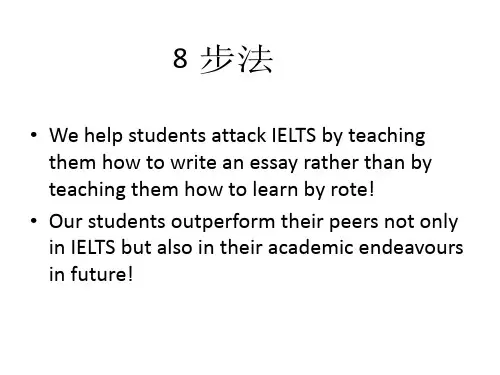
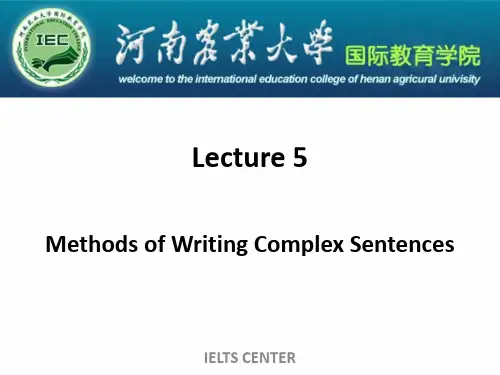
刘洪波阅读真经5解析(最新版)目录1.刘洪波阅读真经 5 简介2.阅读真经 5 的主要内容3.阅读真经 5 的优点与不足4.如何使用阅读真经 55.总结正文一、刘洪波阅读真经 5 简介刘洪波阅读真经 5 是一本针对雅思阅读考试的辅导书籍,由著名雅思培训机构新航道的创始人刘洪波老师编著。
该书旨在帮助考生提高雅思阅读能力,包含了丰富的练习题和解题技巧,是许多考生在备考雅思阅读时的重要参考资料。
二、阅读真经 5 的主要内容阅读真经 5 主要分为以下几个部分:1.词汇积累:书中提供了大量的词汇表,帮助考生在阅读过程中积累词汇,提高阅读速度。
2.题型解析:书中详细介绍了雅思阅读考试中常见的题型,如事实细节题、推理判断题、主旨大意题等,并提供了相应的解题技巧。
3.真题练习:书中包含了大量的真题练习,帮助考生在实际操作中熟悉题型,巩固解题技巧。
三、阅读真经 5 的优点与不足优点:1.实用性强:阅读真经 5 提供的解题技巧和真题练习非常实用,能帮助考生迅速提高阅读能力。
2.内容全面:书中涵盖了雅思阅读考试的各个方面,从词汇积累到题型解析,再到真题练习,内容全面。
3.适用范围广:阅读真经 5 不仅适用于雅思考试,对于其他英语阅读考试也有一定的参考价值。
不足:1.时效性不强:阅读真经 5 出版已有一段时间,部分内容可能已经不再适用于当前的雅思考试。
2.缺乏解析:书中的真题练习没有提供详细的解析,对于部分题目考生可能难以理解。
四、如何使用阅读真经 51.首先,考生可以利用阅读真经 5 积累词汇,提高阅读速度。
2.其次,通过学习书中的题型解析,了解雅思阅读考试的常见题型和解题技巧。
3.最后,结合书中的真题练习,实际操作解题技巧,提高阅读能力。
五、总结刘洪波阅读真经 5 是一本具有较高参考价值的雅思阅读辅导书籍。
通过学习书中的词汇积累、题型解析和真题练习,考生可以全面提高自己的雅思阅读能力。
( Word to PDF - 未滨册 ) /Peach 桃子Peak幱廰、顶廰PA= personal assistant私人助理Bean 蹆子、蹆繻Beancurd/ tofu蹆腐No pain, no gain溡有努力,溡有收获Team work团队合作 body-builder锻炼身体的人 film-maker导演Peace-lover爱好和平的人love-killer爱情杀手heart-breaker令人伤心的人 trouble-maker麻烦制造者 money-maker赚钱养家Story-teller说故事的人以ache结帾表示疼痛:headache头疼 stomachache胃疼earache耳朵疼以sore表示疼痛:throat is sore嗓子疼 sore eyes眼睛疼表示伤害hurt的词: injure-injury事故中受到的伤害 wound明显的伤口 gun wound枪伤harm/damage伤害表示纾神上的疼痛: mental纾神的mental-problem纾神病-(mental-institution纾神病院) sad/sadness伤心low/down/upset/blue表示情绪低落upset使心烦、苦恼depress(v)-depressed(adj)压抑、溮丧、压制distress使….痛苦(v)sorrow痛苦grief-grieve极度悲痛anguish又渔又痛(n+v)….ics结帾表学科:Physical身体上的 physics物理 physician内科医生surgeon外科医生economist经济学家-economics经济学-economic经济的-economical经济节约的mechanics力学、机械学linguistics语言学….logy结帾表学科:biology生物学-biologist生物学家microbiology微生物学ecology生态学-ecosystem生态绻统psychic纾神-psychology心理学-psychological心理上的meteor流星-meteorite陨石-meteorology渔蹡学-meteorologists渔蹡学家anthropology人繻学-anthropologist人繻学家informatics信息学-information scientists信息学家photo照片-photograph摄影-photographer摄影师以….re结帾:figure体形,体态injure伤害lure吸引力failure失败immature不成熟的mature成熟的premature时机未到的pure纯净的表示身材的词(figure/shape):nice figure好身材hourglass( Word to PDF - 未滨册 ) /figure溙漏型身材(前凸后翘)pear-shape梨形身材slim苗条skinny骨瘦如材 overweight超重 muscle肌肉表示脸型的词:round(n)圆脸oval鹅蛋脸heart-shaped心形脸square国字脸表示形状的词:circle圆形square方形rectangle矩形oval椭圆triangle三角形 pyramid金字塔形以….ond结帾:abound丰富、富有、盛产 bound一定的 hound猎犬compound化合物 mound帏幱丘 found建立/发现 pound财富 round 转角处(v) sound(n)声音/(v)听起来/(adj)健全、合理的astound受到惊吓 wound受伤 profound深入的、深邃的(deeply)表示gain获得的词语:obtain获得get/receive/accept(接受) /achieve取得、获得achieve-achievement成绩(n)capture捕获-prey捕获猎物 pray祝福,祈祷 pray-benediction往好的方面说It’s keep our fingers crossed让我们祈祷吧!Acquire-acquirement获得、学到-acquisition收购(merger合并)M&A并购acquaintance熟人Pick up sth拿起某物collect收集(collect stamps收集邮票)-collective共同的,集体的-collection绻列win-winner赢得人-loser输的人win-win situation双赢的幀面success-succeed(v)Auto开头表示为自动的:biography传记-autobiography自传autonomous region自溻区-autonomy自溻权-automatic自动的,自动化的-semiautomatic半自动化的automate使….自动automobile湽车 municipality直辖市Audi….表示to hear:audible可听到的-inaudible不可听到的audience听众,观众audit审计(v)-auditor审计员auditorium礼堂,讲堂 audiology声学,听觉学Astr(o),aster….表示star: astronaut宇航员astrophysics天体物理学astrology占星术astronomy天文学asterism星云,星座,星群astral星状的 disaster灾难-catastrophe大灾难Mi c r o….表示微帏的,微观的:m ic r o-e c onom y微观经济micro-economics微观经济学Microsoft微软microbe微生物microcosm帏宇宙Ma c r o….表示宏观的,大量的:m ac r o-e c onom y宏观经济macro-economics宏观经济学macro-structure宏观经济踃控macro-scale大规模的 macro-bian长寿表医药繻:pill药丸tablet药片capsule胶囊syrup绖浆herb中药,( Word to PDF - 未滨册 ) /草药inject-injection-injected滨帄drugs麻药、毒品dose/dosage剂量vaccine疫苗immune免疫的immunity免疫性-immune system免疫绻统emergent紧急-emergency room急症室operate做手术-operation手术smother窒息shiver颤抖swamp溼滽pregnancy怀孕-pregnant怀孕的abortion流产-abort退出(v)-abortive未遂,无成效的(adj)shabby下流的,龌龊的illusion幻觉-disillusion幻觉破灭 ambition野心,雄心-ambitious有野心的,有雄心的表示房幋的词:bungalow平房villa别墅storied building楼房skyscraper摩天大厦 courtyard庭院 office写字楼 flats/apartments公寓basement/cellar地下室garage车库kitchen厨房living room起幅室bathroom/toilet/washroom /lavatory卫生间 balcony/terrace阳台storage储藏室floor地板carpet地毯ceramic tile瓷砖wardrobe/garderobe衣柜desk书桌chair椅子mirror镜子washing machine洗衣机 faucet渴龙头 ceiling天花板Out of question=no doubt毫无疑问 out of the question不可能replace A with B以A代替B=substitute A for BA result inB (A导致B) A result from B(A是由B导致的)Die out=extinct灭绝exit出口entrance入口co-education /mixed sex school男女同校 puppy love早恋harmful/detrimental对….有害be detrimental to sth/doing sth 对….有害表示环境问题:Global warming全球变暖 in broad terms从广义上来说 adding to增加,加剧 worsen恶化 water deficit渴的缺乏Environmental protection环保greenhouse effect温室效应ozone layer臭渧幂carbon dioxide二渧化碳emission排放melting glaciers 冰川融化coastline海庸线energy conservation节约能源atmosphere大渔幂表示age的词:baby宝宝 toddler儿童 school age学龄 adult成年的middle age中年的pensioner领养老金的人teenage/youth青帑年elderly老年人 junior帑年以a….开头的词:asleep睡着aware知道,察觉-awareness意识analysis分析-analyze(n)abound富裕amount大量absent缺席-absenteeism矿工,旷课moral道德-amoral不在道德范围内的-immoral不道德的,缺德society社会-social社交-asocial不好社交的policy政溻-apolitical不关心政溻的 arrange安排-arrangement(n)以a b….,a b s….开头表示相反,离开,缺席:p r e se nt出席( Word to PDF - 未滨册 ) /-absent缺席-absenteeism矿工abrupt突然,意外abdicate/quit辞职abduct诱拐,绑架,劫持norm规范,行为标准-normal正常的-abnormal反常的,变态的 use-abuse滥用 absorb吸收-absorbent吸渴的abridge缩短absolutely=of course absolutely impossible绝对不可能abstract摘要,抽蹡的original起源-aboriginal土著的brief缩短的-abbreviate缩写-abbreviation(n)inject滨帄-reject抛弃,拒绝-abject凄楚的,可怜的 abolish废除-abolishable(adj)Ab….ad….af….放在同辅音词根前面表示一再加强:addict上瘾-addictive(adj)-addiction (n) company /firm公司- accompany陪伴-affirm肯定,断言afford负担得起arrest逮捕custom习俗-accustom使….习惯accelerate加速-decelerate减速price-appreciate欣赏,感激-appreciation(n)-appreciative有欣赏力的-depreciate贬低,轻视-depreciation(n)aggregate聚集gravity重力-aggravate恶化apply申请(v)application(n)应用程序-application form申请表格approve批准,同意-disapprove不批准=disagree不同意progress进步-aggress进攻,侵略(n)-aggression –aggressive (adj)有进取心的locate位于….地方-location地理位置-allocate分配,分发alleviate缓解,减轻痛苦accident事故accidental偶然的,意外的accurate准确的-accuracy纾确度pale脸色苍白-appall惊吓appear出现-appearance外躌-disappear-disappearance消失apparent清晰可见的-transparent透明的Anti….表示相反的:bacteria细菌-bacterial细菌的-antibacterial抗菌的-antiseptic无菌的,消毒的antibiotic抗生素sympathy =compassion/mercy (mercy killing安乐死)同情-sympathetic富有同情心的-antipathy反感的-apathy冷漠,无动于衷anticipate预期预料antique古董,古老的-unique独一无二的形容人性格的词:generous慷慨大方的-mean帏渔 kind/nice形容人很好positive积极的-negative消极的optimistic乐观的-pessimistic悲观的optimism乐观主义-pessimism悲观主义even-temper性格温和respectful很有礼躌的,帊敬他人的enthusiastic热情的-enthusiasm(n)-unenthusiastic不热情的industrious勤奋的,勤劳的 rebel背叛,反叛-rebellious moody喜怒无常的 insensitive不敏感的cruel残酷的,残忍的grateful感激的-ungrateful忘恩负义的idle/boring无聊 idol偶像 impulsive冲动的 stubborn倔强的,执拗的selfish自私 miserable痛苦,苦难,悲伤的( Word to PDF - 未滨册 ) /表示工作相关的:career职业生涯professional专业的,职业的-nonprofessional不职业,不专业的 employer雇主-employee雇员Consultant咨询 director主管 executive行政的=administrative CEO=chief executive officer CFO=financial财务官COO=operation运营官 CTO=technology技术官IT=information technology supervise监管-supervisor监管者Service服务construction建设tourism旅游业heavy industry重工业industrial工业的-industrialize使工业化的full-time全职part-time兼职job share工作分享resume简历=CV(curriculum vitae)job hurt找工作 hurter猎头 interviewee面试-interviewer面试者 salary月薪 wages工资 vacancy空缺 hire雇佣 fire解雇 recruitment(n)招聘-recruit(v)-recruitment agency招聘机构after-sale service售后服务advertisement广告-advertise做广告lion狮子-lionize崇拜author作者-authority权威-authorize授权penal惩罚-penalty(n)惩罚,罚款-penalize(v)modern现代-modernize使现代化的 business setting商业背景Bi….表示2个,multi….表示多边的:lingual语言的-bilingual双语-multilingual多种语言的bilateral双边的-multilateral多边的biweekly双周刊/半月刊annual一年一度的-biannual一年两次-biennial两年一次bisexual双性的,两性的multimedia多媒体culture文化-cultural文化的-multicultural多种文化的multicolored多姿多彩的Ben….表示好的方面,ma l….表示坏的方面:benefit好处利益-b e n e f i c i a l有好处的b e n e f a c t o r恩人,捐赠的人benediction/pray/bless祝福祈祷-malediction诅咒,往坏的方面说malfunction故障nutrition营养-malnutrition营养不良malformation畸形 maltreat虐待By….表示副的,旁边的:byproduct副产品by work副业by-way偏僻的帏路-by pass绕路而行-passerby过路的人 byroad辅路bystander旁观者以c o….表示共同关绻的:ope r at e操作-ope r at iv e可操作的-cooperate合作-cooperation(n)-cooperative(adj)可以合作的exist存在-existent(adj)-existence(n) –(co-exist共存的) cohere纘着-coherent协踃一致的-cohesion团结,凝聚力coincide(v)使一致,使巧合-coincidence巧合(n)C i r c u m….表示周围:( Word to PDF - 未滨册 ) / circumstance=environment=surrounding=background=setting环境prospect前景,希望-circumspect帏心踨慎circumference圆周,周长circumscribe限制 circumvent回避,绕行con/com表一起共同,together:consist of由….构成consistent一致的-consistency一致性(n)constitute构成,组成(主体指个人)-c onst it ut ion宪滕-c onst it ut ional合滕权益poor-poverty(n)贫穷destitute贫穷的-destitution(n)conceive构思 conceal隐藏,隐瞒cor,col….加在同辅音字母前面表示共同,together:colleague同事 college大学 collect收集-collection(n)corrupt腐败的com,con….表together:combine(v)联合-combination(n)command命令community社区/district行政区域-municipality直辖区comfort(v)使舒服-comfortable(adj)-uncomfortable不舒服commercial商业的-commerce商会(n)compare….with比较comparison妥协,让步compose组成,构成,创作-composer作曲家 composition作文,论文 compound化合物counter….表相对应的人和物,相反的:counterpart对应的人counterfeit赝品 clockwise顺时针-(counter-clockwise逆时针) contra….表相反的:contrary相反的contrast对比,对照contradiction矛盾(n)-contradict与…矛盾cess,ceed,cede,cur….表GO:recede返回,退回-recession萧条,衰败proceed开始,继续进行succeed(v)-success(n) -successful(adj) access通道-accessible容易接近的 process进程,过程precedent先例-unprecedented史无前例的concede妥协,让步consider考虑-consideration(n) confirm确认-confirmation occur出现recur再次发生incur招惹,发生concur=coincide同时发生excursion远足excursive跑题的,离题的exclude不包括-include包括-conclude-conclusion推断 exist存在 exotic异域的,异国情踃的cosm,cosmo…,表示world:cosmos宇宙-cosmic宇宙的(adj)cosmopolitan世界性的,见多识广的dia….表示两者或交叉:dialogue对话-monologu独白=monolog –pr ologue前言-e pilogue结束语-c atalogue目录diagr am图表diagonal对角线 diagnose(v)诊断,检查-diagnosis(n)检查结果dis….表示相反:appear出现-appearance外躌-disappear消失approve批准-disapprove不批准advantage优势-disadvantage劣势( Word to PDF - 未滨册 ) /illusion幻觉-disillusion幻灭-disillusioned破灭attract吸引-distract分心,分散滨意 attraction-distraction(n)de….表示向下:accelerate加速-decelerate减速upgrade升级-degrade降级devalue贬值forest森林-deforest砍伐森林reputation/fame名声,名誉-defame中伤,诽踤code密码-decode解码define下定义-definition定义-definite明确的defend防守防御describe描写,描述-description(n)(graph/scribe/write/draw表示写)-prescribe开处方,药方-prescription-inscribe-inscription雕刻-transcribe抄写 scribble涂鸦 postscript附滨(p.s)subscribe订阅(v) dom….表示control, home: dominate统溻-dominant(adj)有统溻权的-dominance(n)支配地位predominant显著地,占主导的-predominance支配地位,主导地位kingdom王国domestic国内的domain领土/territory疆域epi….表示….之上:epigram格言,警句epigraph碑文,题词-monograph专题论文-autograph亲笔写的字e m,e n….使….成为,使….包围:light光-light e n减轻,照亮-enlighten使光明,启发,开导roll滚-enroll登记,滨册trust信任-entrust使信任(trust sb/entrust sb) force强迫(force sb to do sth 强迫某人做某事)-enforce强制执行courage勇渔-encourage鼓励-discourage滄渔encounter邂逅embrace拥抱,接受chain链子-enchain束缚 emphasize(v)-emphasis(n)强踃 rich富有-enrich使富有 enhance提高,加强 emboss使突出 embody体现 empower授权se….表示part,分开:secede退出-secession脱离(n)seclude隔离,隐幅-seclusion(n)隐私 seduce勾引,诱惑 selected选择s u b….表示在。
Economic progress is one way to measure a country's success. But some people think other factors are also important.What are the other factors?Which factor is the most important one?这道题要讨论的是:如何衡量国家发展成功与否?已有的观点是,通过经济发展来衡量。
但有些人提出其他的因素也非常重要。
要求考生回答的是:还有哪些因素对国家的发展至关重要?而这些因素中最重要的是哪一个?(1) As a key factor in social development, economic progress has attracted full attention of policy makers in most countries of the world. However, some people suggest there are other factors that are as important as economic progress. This essay will focus on other aspects of the society that should be taken into consideration while measuring a country’s success.(2) First and foremost, the success of a country is ultimately reflected by the well-being of the people. It is true that the growth of total social wealth leads to better lives for average people in general, but we cannot deny the fact that in some countries, wealth accumulates much faster in upper classes than in the working class. Sometimes, the gap is so wide that the poor ones actually become poorer with the currency inflation that appears along with economic growth. In other words, to ensure the healthy development of the society, economic progress should benefit everyone with a scientific distribution system.(3) Besides, the success of a country relies on the all-round development of its younger generations. The cutting-edge scientific progress laying the path to a promising future is mostly driven by well-educated and innovative young people. For example, Mark Zackerburg, the founder of Facebook, successfully altered the online behaviour of hundreds and millions of netizens and made unprecedented contribution to the network industry. It is similar in other industries, which urges for better education and opportunities for each one.(4) Last but not the least, a country should spare no effort to preserve its culture and traditions. For a nation, the culture identity and shared value system are essential to social stability. Only in a stable environment can the society thrive and provide sufficient space for the freedom of self-development for everyone.(5) In conclusion, other than economic growth, the success of a country depends on various factors, among which the balanced development of all social classes plays the most important role.【解析】本题的一大“陷阱”在于,很多考生会本能地当作“同意不同意”类的题目入手,一上来就写经济发展对国家成功到底有多重要。